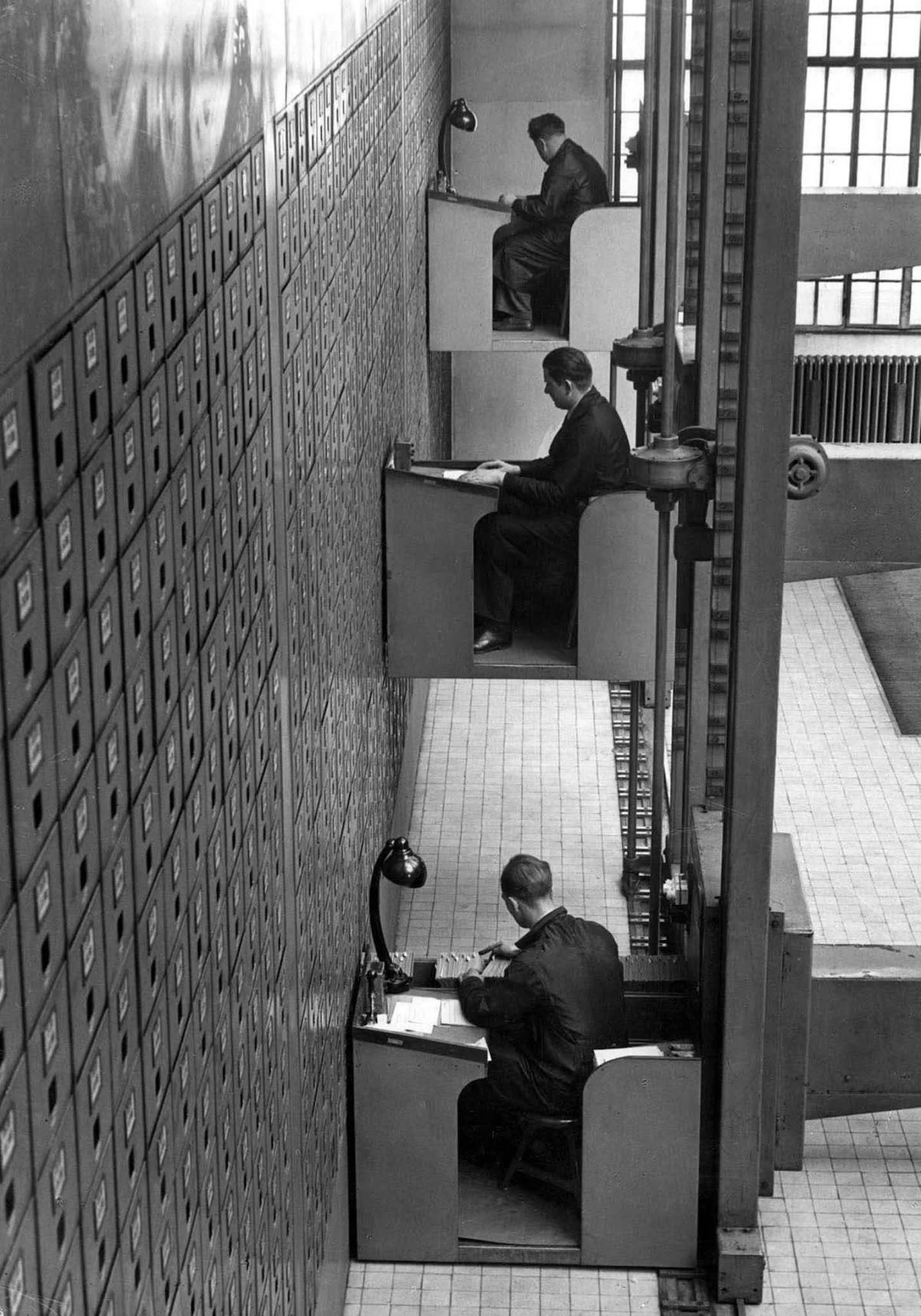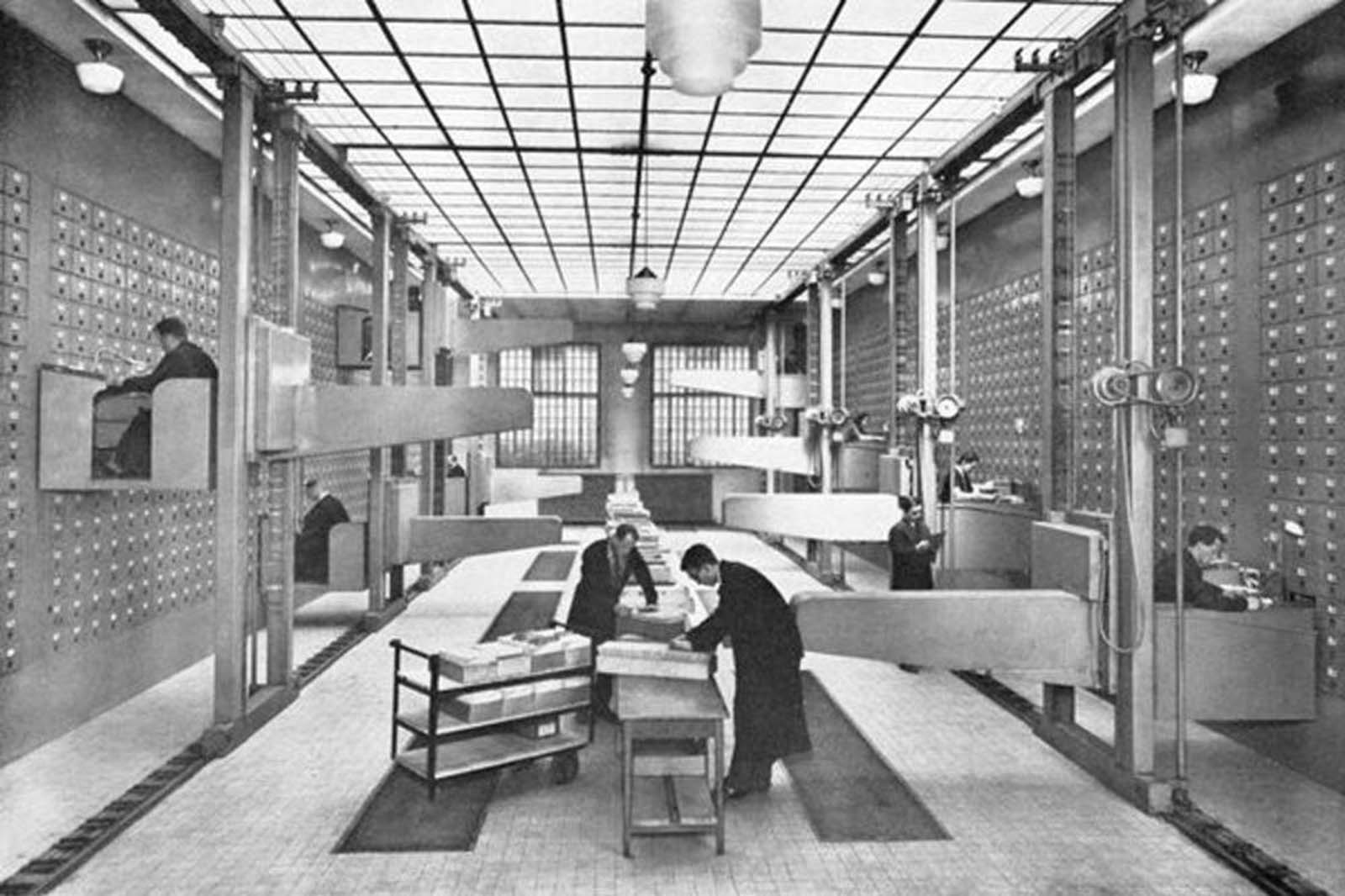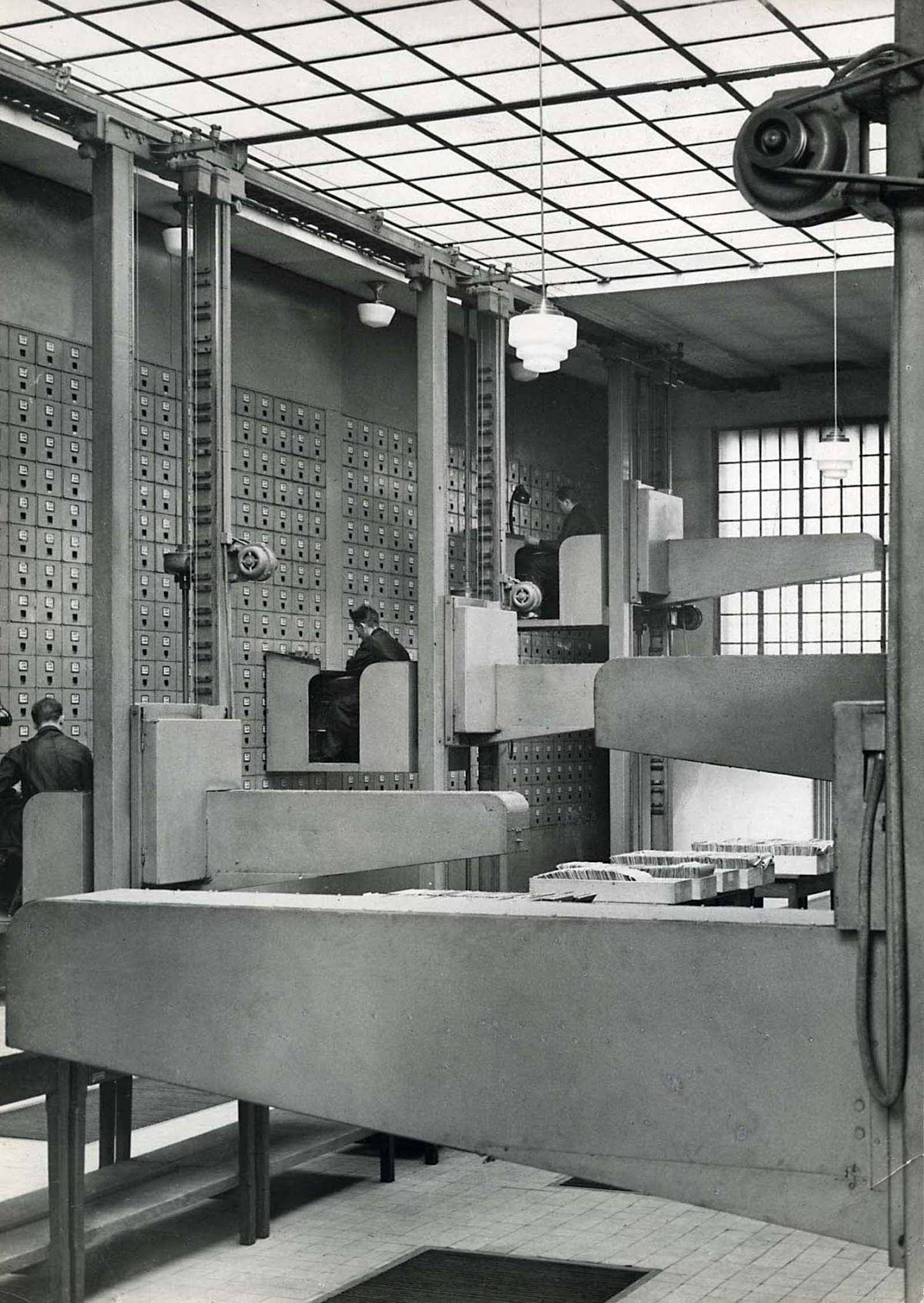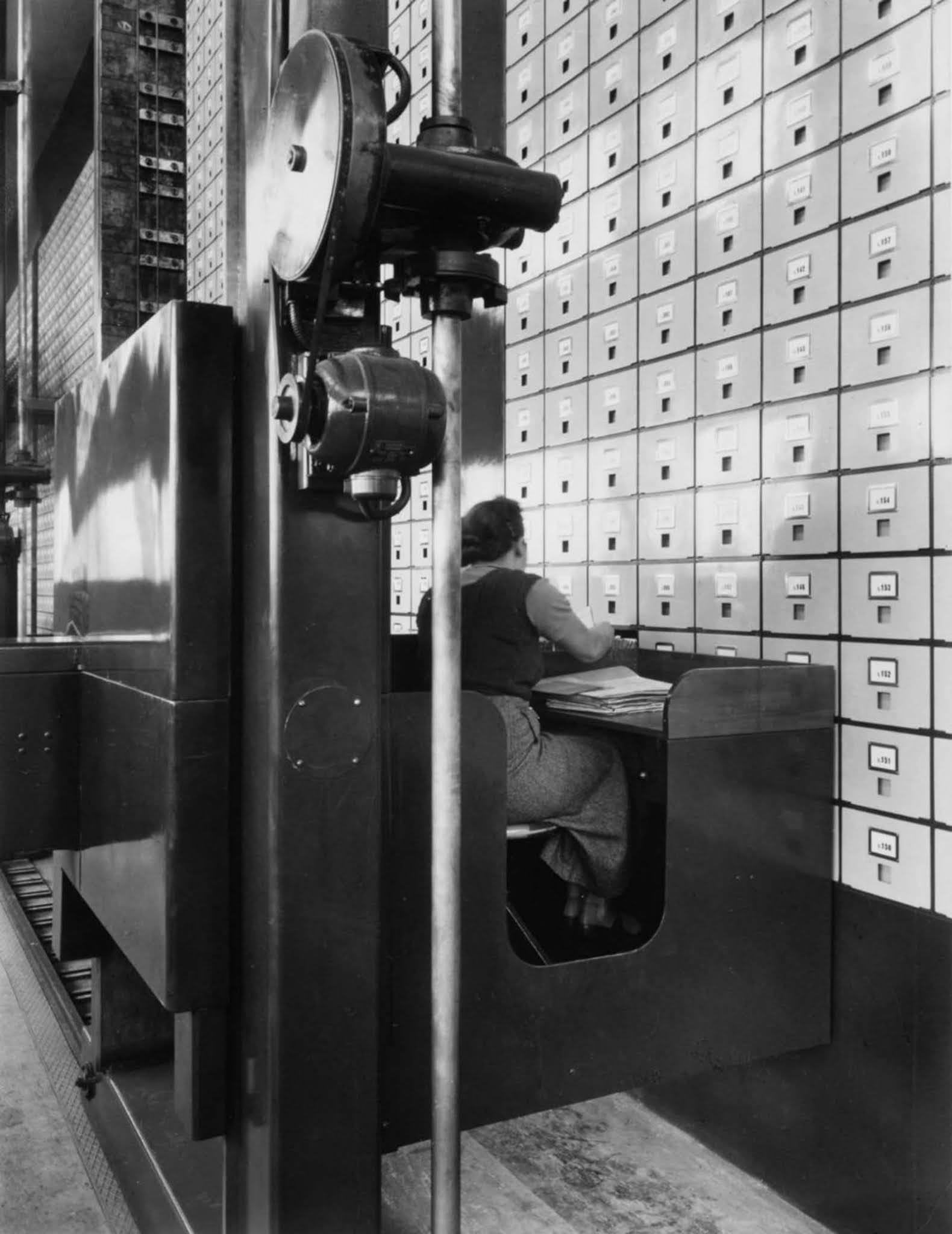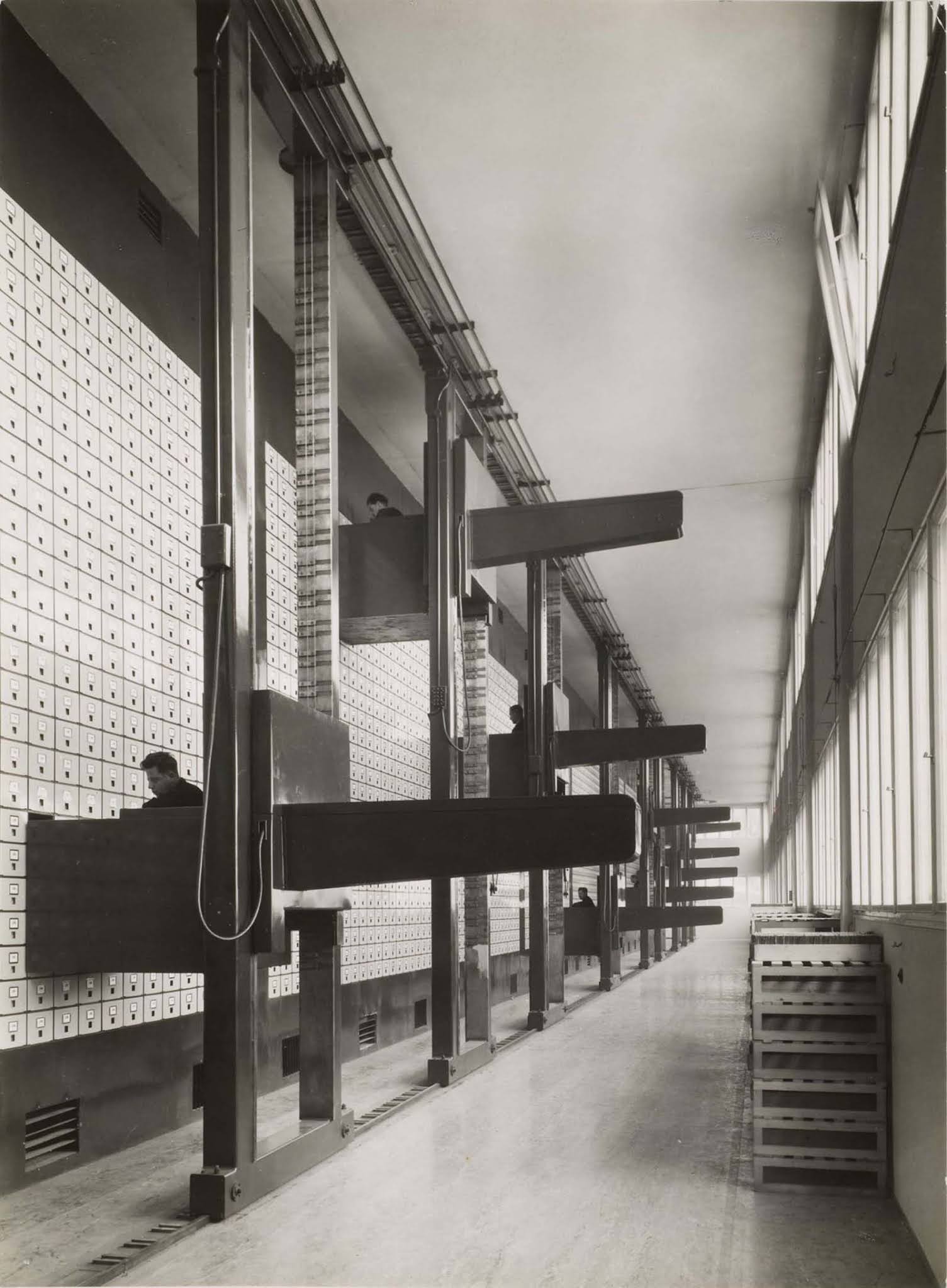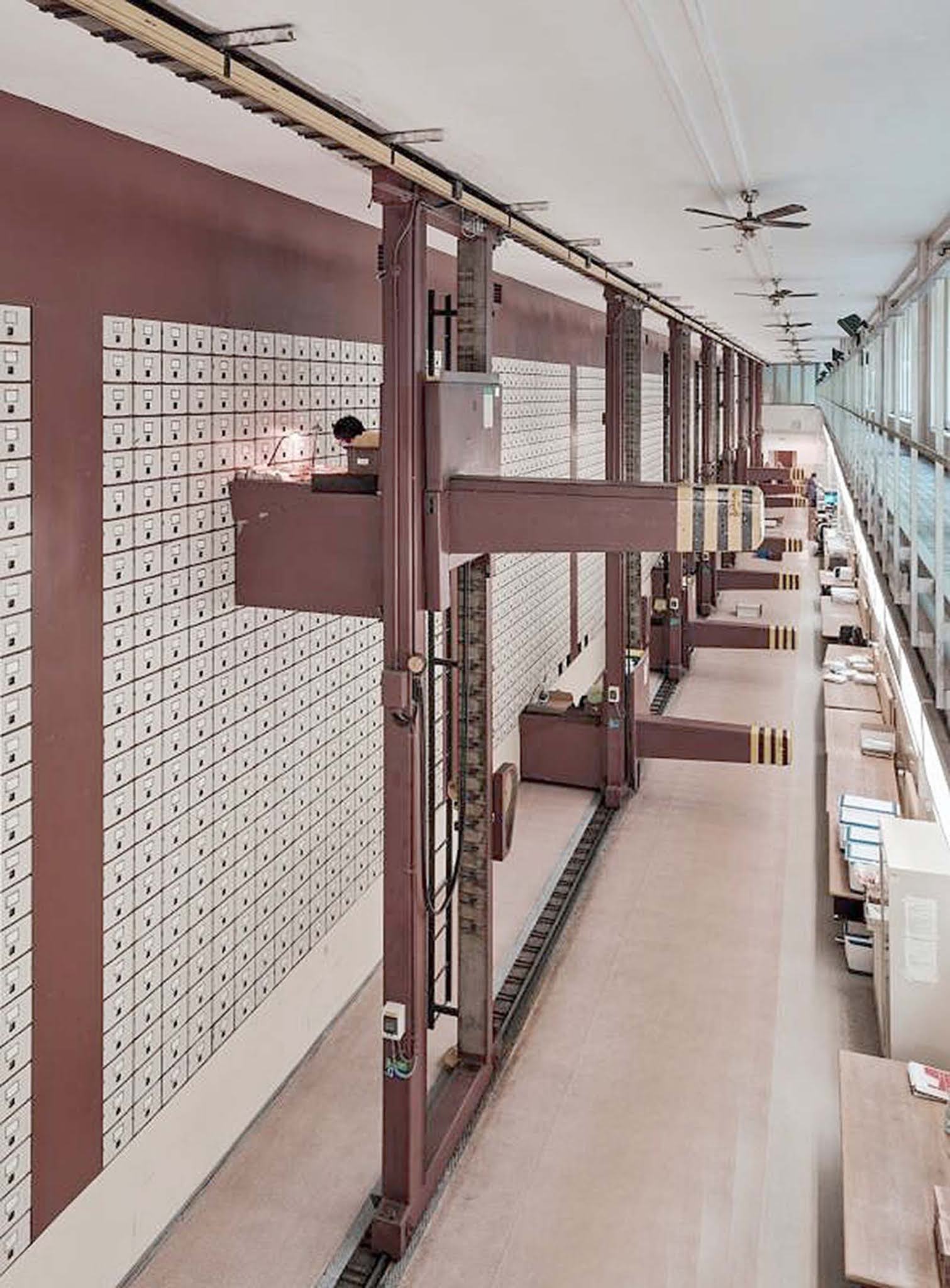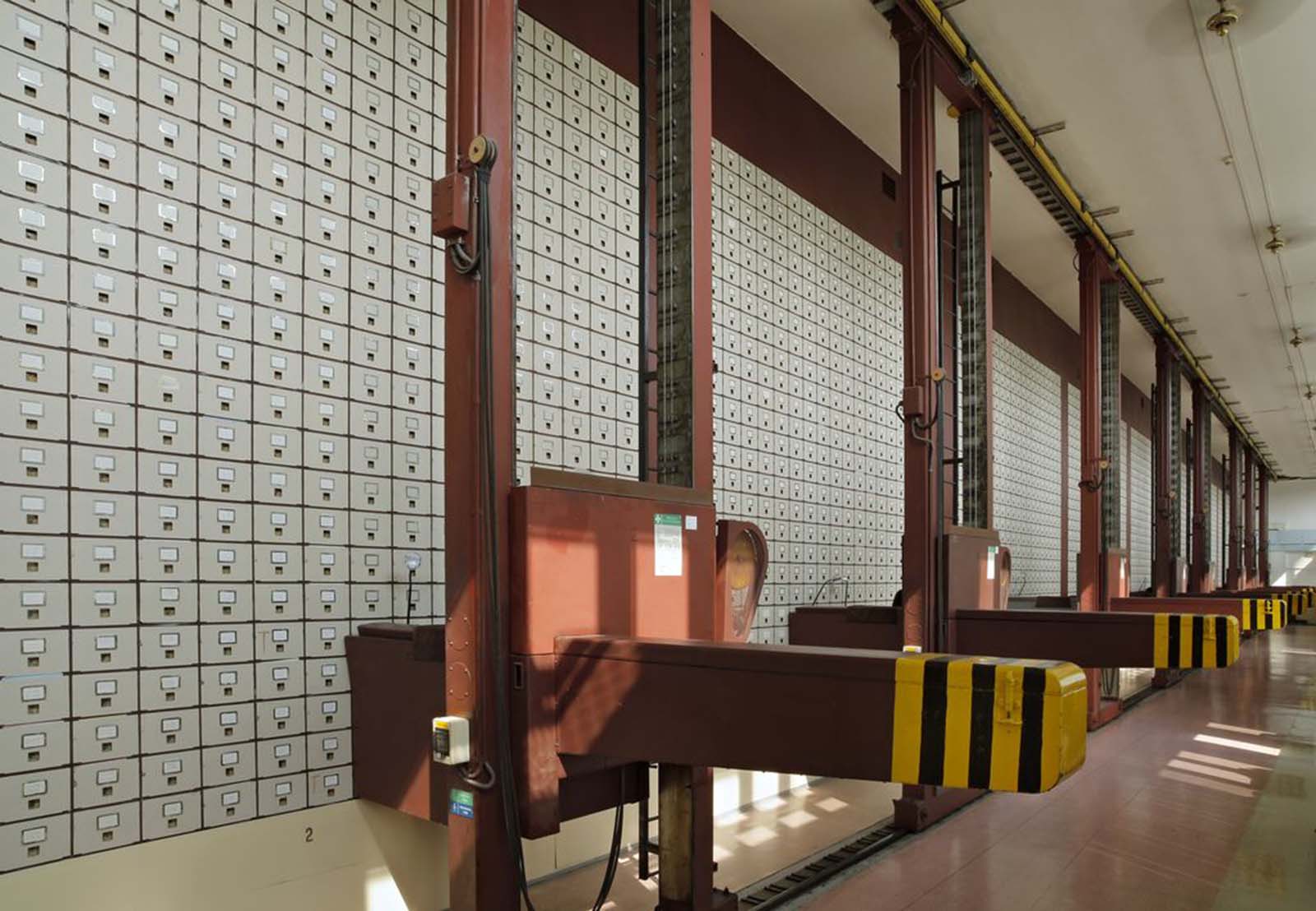The builder designed special electric-operated elevator desks which rise, fall, and move left or right at the push of a button, to stop just before the desired drawer. The drawers also open and close electronically. Thus work which formerly taxed 400 workers is done by 20 with a minimum of effort. While nowadays it may be a rare sight, vertical files were extremely common in the paper era. In libraries, they were subject files containing news clippings and other information sources aside from books and stored in filing cabinets. Companies kept vertical files of their correspondence and had specially trained clerks who managed complicated tracking systems for millions of cross-referenced pages. The Central Social Institution is a government agency (today called “Česká Správa Sociálního Zabezpečení”, “Czech Social Security Administration” in English) that handles distributing pensions and other forms of social security. These particular offices still exist today, although only used as an archive now since the documents got digitalized. If this picture made you think of the prolific author, Franz Kafka, that’s because it probably should. The term “Kafkaesque” is used to describe concepts and situations reminiscent of his work, particularly “Der Process” (The Trial) and “Die Verwandlung” (The Metamorphosis). Examples include instances in which bureaucracies overpower people, often in a surreal, nightmarish milieu that evokes feelings of senselessness, disorientation, and helplessness. Kafkaesque elements often appear in existential works, but the term has transcended the literary realm to apply to real-life occurrences and situations that are incomprehensibly complex, bizarre, or illogical.
(Photo credit: Česká Správa Sociálního Zabezpečení / UPPA). Notify me of new posts by email.
Δ Subscribe
